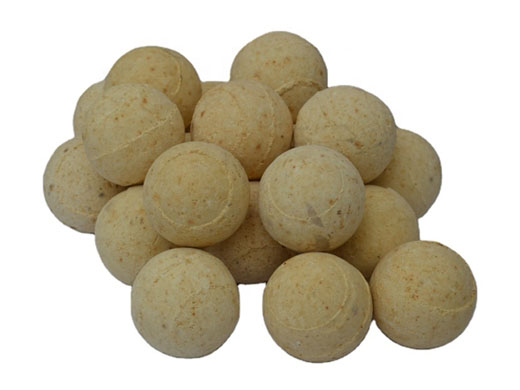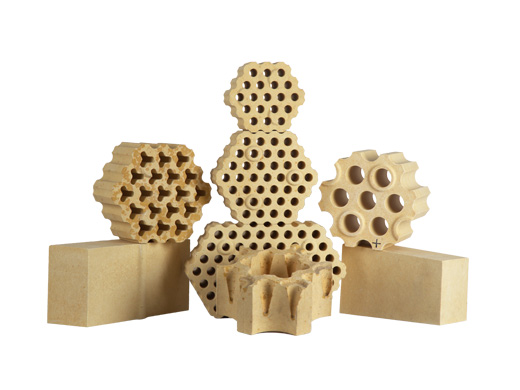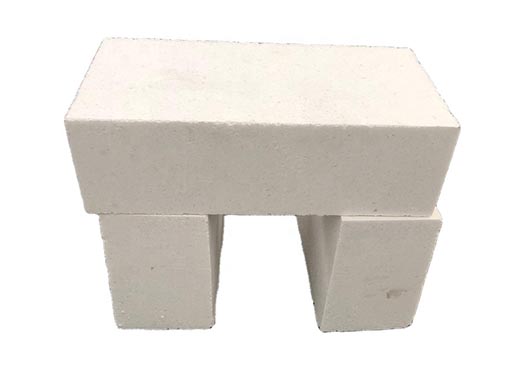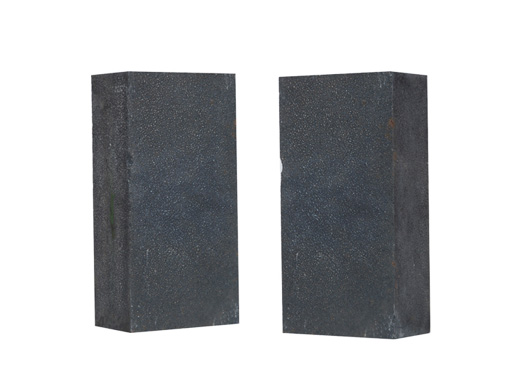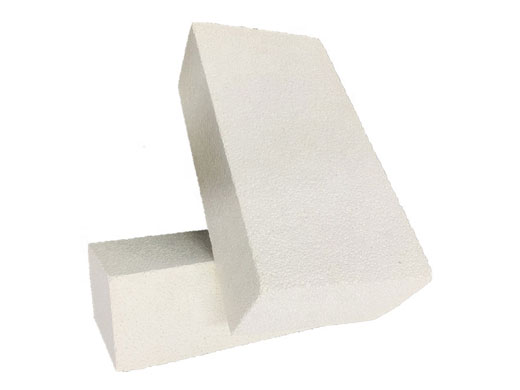Understanding Silicon Carbide Bricks: Composition and Uses
Industry news | Refractory Wiki | Refractory news | Enterprise news |Introduction:
Silicon carbide (SiC) bricks are known for their excellent strength and resistance to extreme temperatures. In this article, we will delve into the composition of silicon carbide bricks and uncover the secrets behind their special properties and various applications.
The composition of silicon carbide brick:
Silicon carbide bricks are mainly composed of two key elements: silicon (Si) and carbon (C). These two elements combine to form a unique compound with excellent thermal conductivity, high mechanical strength and excellent resistance to chemical corrosion.
Silicon (Si):
Silicon is an important component of silicon carbide brick, accounting for a large part of the composition of silicon carbide brick. It can not only be used as a binder, but also enhance the oxidation resistance and chemical erosion resistance of bricks. Silicon gives bricks stability and durability, allowing them to withstand harsh environments.
Carbon (C):
Carbon is the second most important element in silicon carbide bricks and plays a crucial role in determining their special heat resistance. The presence of carbon gives these bricks a special ability to withstand extreme temperatures without losing their structural integrity. Carbon also contributes to the brick's excellent thermal conductivity and low thermal expansion.
Additional components:
In addition to silicon and carbon, silicon carbide bricks may contain trace amounts of other elements and additives to further improve their performance. These elements include aluminum (Al), iron (Fe), and nitrogen (N). These additives help adjust the properties of bricks, such as improving their mechanical strength, enhancing their resistance to thermal shock, or optimizing their chemical resistance.
How are silicon carbide bricks made?
The production of silicon carbide bricks involves a multi-step process, starting from the selection of high-quality raw materials and culminating in the precise firing of the formed green bricks. Through careful mixing, shaping, drying, pre-firing, and high-temperature firing, manufacturers create silicon carbide bricks that exhibit exceptional thermal resistance and mechanical strength. By following stringent quality control measures, these bricks become reliable building materials utilized across various industries, offering durability and performance in high-temperature environments.
Raw Material Selection:
The first step in producing silicon carbide bricks is the careful selection of high-quality raw materials. Manufacturers choose silica sand and petroleum coke as the primary ingredients. These materials are chosen for their purity, consistency, and chemical composition, ensuring the bricks' optimal performance.
Mixing and Grinding:
Once the raw materials are selected, they undergo a precise mixing and grinding process. The silica sand and petroleum coke are blended together in specific proportions. This mixture is then ground into a fine powder, enabling the particles to combine evenly during the subsequent stages.
Forming the Bricks:
The powdered mixture is next transformed into the desired brick shape. There are two common methods used for forming silicon carbide bricks:
a. Pressing: In this method, the powdered mixture is compacted under high pressure using hydraulic presses or mechanical presses. The resulting compacted material, known as a "green brick," possesses a defined shape and structure.
b. Extrusion: Alternatively, the powdered mixture can be extruded through a specially designed die. This process involves forcing the mixture through a shaped opening, creating long strands with consistent cross-sections. These extruded strands, known as "green extrusions," are then cut into individual brick sizes.
Drying and Pre-Firing:
Following the forming stage, the green bricks or green extrusions undergo a drying process to remove excess moisture. This ensures dimensional stability and prevents cracking during subsequent firing. The dried bricks are then pre-fired at relatively lower temperatures to eliminate any remaining organic matter and enhance their strength.
Firing to High Temperatures:
The pre-fired bricks are finally subjected to high-temperature firing in specialized kilns or furnaces. This firing process, known as sintering, allows the silicon and carbon particles to react and form silicon carbide crystals. The temperature and duration of the firing process are carefully controlled to achieve the desired physical and chemical properties of the bricks.
Finishing and Quality Control:
Once the firing is complete, the silicon carbide bricks undergo quality control inspections to ensure they meet the required standards. Any defective bricks are removed, and the approved ones may undergo additional finishing processes such as grinding, polishing, or coating, depending on the intended application.
Silicon carbide bricks properties
From furnace linings and refractory insulation to foundry applications, silicon carbide bricks continue to deliver reliability, durability, and high performance in challenging environments. Their versatility and unique characteristics have established them as a fundamental material for industries relying on robust solutions in the face of extreme temperatures, corrosive substances, and demanding working conditions.
Impressive Thermal Resistance:
Silicon carbide bricks exhibit remarkable thermal resistance, allowing them to withstand extreme temperatures without compromising structural integrity. Whether exposed to intense heat in furnaces or kilns, these bricks remain stable and retain their strength, ensuring optimal performance in high-temperature environments.
Excellent Mechanical Strength:
One of the key features of silicon carbide bricks is their impressive mechanical strength. These bricks possess a robust structure that enables them to endure heavy loads, pressures, and mechanical stress. This inherent strength makes them an ideal choice for applications requiring reliable support and resistance to physical forces.
Superior Chemical Resistance:
Silicon carbide bricks showcase exceptional resistance to chemical corrosion. They can withstand harsh chemicals, acids, alkalis, and other corrosive substances, maintaining their integrity over time. This chemical resistance makes them suitable for applications where exposure to corrosive environments is common, such as chemical plants and incinerators.
Exceptional Abrasion Resistance:
Another noteworthy property of silicon carbide bricks is their excellent abrasion resistance. These bricks can withstand the constant wear and tear caused by friction, making them highly durable in abrasive environments. Industries that involve materials handling, mining, and grinding operations benefit from the extended lifespan provided by silicon carbide bricks.
Low Thermal Expansion:
Silicon carbide bricks exhibit low thermal expansion characteristics, meaning they do not significantly expand or contract with changes in temperature. This property helps prevent thermal stress and cracking, ensuring the structural stability of the bricks even under rapid temperature fluctuations. It also makes them suitable for applications requiring dimensional stability, such as in refractory linings.
Optimal Thermal Conductivity:
Silicon carbide bricks possess excellent thermal conductivity, allowing them to efficiently transfer heat. This property ensures uniform temperature distribution, reduces heat loss, and promotes energy efficiency in high-temperature applications. As a result, industries utilizing silicon carbide bricks can achieve enhanced heating or cooling processes while minimizing energy consumption.
What are the uses of silicon carbide bricks?
Refractory Furnace Linings:
Silicon carbide bricks are commonly used in refractory furnace linings. They can withstand extremely high temperatures, making them ideal for lining furnaces, kilns, and other heat-intensive equipment. These bricks ensure efficient heat retention, minimize heat loss, and provide a durable protective barrier against thermal stress, ensuring stable and reliable furnace operations.
Foundry Industry:
In the foundry industry, silicon carbide bricks play a vital role. They are utilized in crucibles, ladles, and molds that come into direct contact with molten metals. The exceptional thermal resistance and chemical stability of silicon carbide bricks allow them to endure the intense heat and corrosive nature of molten metals, providing an essential protective lining for foundry equipment.
Incinerators and Waste-to-Energy Plants:
Silicon carbide bricks find applications in incinerators and waste-to-energy plants. These bricks can withstand the harsh conditions present in these environments, such as high temperatures and corrosive gases. Their excellent chemical resistance ensures long-lasting performance, making them an ideal choice for lining combustion chambers, flues, and exhaust systems in waste management facilities.
Steel Industry:
The steel industry extensively relies on silicon carbide bricks. These bricks are utilized in steelmaking processes, including electric arc furnaces and ladles. Their ability to withstand extreme temperatures, mechanical stress, and chemical corrosion makes them indispensable for lining these critical components, ensuring efficient steel production and maintaining the integrity of the equipment.
Ceramic and Glass Manufacturing:
Silicon carbide bricks are also employed in ceramic and glass manufacturing. They serve as excellent kiln furniture, supporting ceramic or glass products during firing processes. With their exceptional thermal resistance and dimensional stability, these bricks can withstand the intense heat of kilns while maintaining shape and preventing deformation, ensuring high-quality ceramic and glass production.
Petrochemical Industry:
In the petrochemical industry, silicon carbide bricks are utilized in various applications. They find use in reactors, regenerators, and reformers, where they can withstand high temperatures, harsh chemicals, and corrosive atmospheres. These bricks provide reliable protection against thermal fluctuations, ensuring the stability and efficiency of petrochemical processes.
Conclusion
From thermal management and abrasive environments to chemical resistance, high-temperature applications, and advanced electronics, silicon carbide delivers outstanding performance, durability, and reliability. Its unique characteristics continue to drive innovation, enabling efficient operations, improved energy efficiency, and extended equipment lifespan across diverse sectors.
Newest
- 2023-07-31
Properties of silicon nitride and its application in refract···...
- 2023-07-31
Properties of silicon nitride and its application in refract···...
- 2023-07-31
Properties of silicon nitride and its application in refract···...
- 2023-07-31
Properties of silicon nitride and its application in refract···...
- 2023-07-31
To explore the application of magnesia carbon brick in refra···...
Solution
- 2022-11-22
The technical requirements and production processes of fused···...
- 2022-09-06
Price Determinants of high alumina fire bricks...
- 2022-08-30
Technical performance and technology of silica mullite brick···...
- 2022-08-27
Refractory materials in various parts of the furnace and pre···...
- 2022-08-23
Magnesite chrome brick composition process classification...
